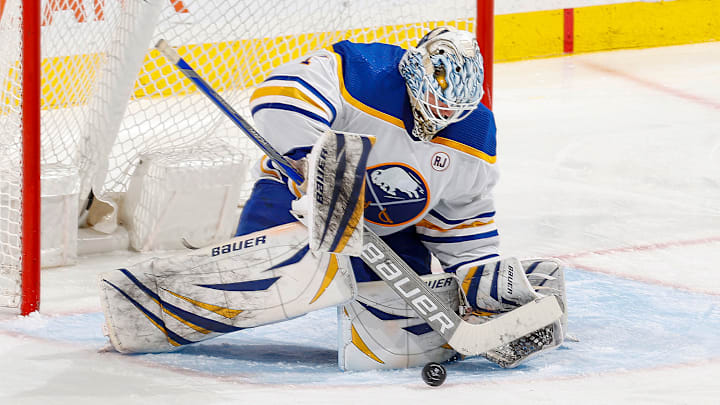4: To trade or not to trade the 11th overall pick
Some may call this one the toughest decision, as the Sabres had a 13th overall pick who worked out pretty well for them last season. While they were looking to parlay their strong finish in 2022-23 into a playoff berth the sense of urgency wasn’t quite as high as it will be for 2024-25.
Plus, lightning isn’t striking twice, so if they kept the 11th pick, whoever they select is not making an immediate jump to the NHL, nor should they. Zach Benson was a unique case, as the Sabres not only had room in the lineup, but he was also one of their top forwards in quite a few of those contests.
But, keeping the 11th overall pick and drafting a prospect while waiting until July to make a big trade also shouldn’t be out of the question. Drafting a player and letting them succeed either in college, overseas, or at the junior level means they could become a high-end trade piece themselves in the future. And speaking of which…
3: Which high-end prospects to include in a potential offseason trade
This one would be ranked even higher, but because of the win-now mentality that should be sweeping across the organization, there were two that could be more pressing. The Sabres have arguably more high-end prospects than any other organization, and there is one team - the Anaheim Ducks - that could A) Take some prospects and B) Have quality players to give, something I discussed in my latest mock draft simulation.
But what if Jiri Kulich, for example, is ready to roll in the NHL, and the Sabres trade him to Anaheim in a package that also includes a first-round pick for someone like Trevor Zegras (or Frank Vatrano)? We know Zegras never got going last season and Vatrano is heading into his age-30 season, and if Kulich becomes the player we know he will be, well, that’s the entire risk-reward factor.
What about Matt Savoie and Isak Rosen? Another pair of players who could easily win a spot in an NHL lineup. But then again, the Blue and Gold are in win-now mode, which is why the decision to include or not to include a high-end prospect in a trade isn’t as pressing as the top two on this list.
